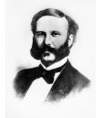The Formation of the IFRC
The International Federation of Red Cross and Red Crescent Societies (IFRC) was founded in 1919 in Paris in the aftermath of World War I. The war had shown a need for close cooperation between Red Cross Societies, which, through their humanitarian activities on behalf of prisoners of war and combatants, had attracted millions of volunteers and built a large body of expertise. A devastated Europe could not afford to lose such a resource.
It was Henry Davison, president of the American Red Cross War Committee, who proposed forming a federation of these National Societies. An international medical conference initiated by Davison resulted in the birth of the League of Red Cross Societies, which was renamed in October 1983 to the League of Red Cross and Red Crescent Societies, and then in November 1991 to become the International Federation of Red Cross and Red Crescent Societies.
The first objective of the IFRC was to improve the health of people in countries that had suffered greatly during the four years of war. Its goals were "to strengthen and unite, for health activities, already-existing Red Cross Societies and to promote the creation of new Societies"
There were five founding member Societies: Britain, France, Italy, Japan and the United States. This number has grown over the years and there are now 189 recognized National Societies - one in almost every country in the world.
The Birth of an Idea
The Red Cross idea was born in 1859, when Henry Dunant, a young Swiss man, came upon the scene of a bloody battle in Solferino, Italy, between the armies of imperial Austria and the Franco-Sardinian alliance. Some 40,000 men lay dead or dying on the battlefield and the wounded were lacking medical attention.
Dunant organized local people to bind the soldiers' wounds and to feed and comfort them. On his return, he called for the creation of national relief societies to assist those wounded in war, and pointed the way to the future Geneva Conventions.
"Would there not be some means, during a period of peace and calm, of forming relief societies whose object would be to have the wounded cared for in time of war by enthusiastic, devoted volunteers, fully qualified for the task?" he wrote.
The Red Cross was born in 1863 when five Geneva men, including Dunant, set up the International Committee for Relief to the Wounded, later to become the International Committee of the Red Cross. Its emblem was a red cross on a white background: the inverse of the Swiss flag. The following year, 12 governments adopted the first Geneva Convention; a milestone in the history of humanity, offering care for the wounded, and defining medical services as "neutral" on the battlefield.
 |
Henry Dunant - the destiny of the Red Cross
Jean-Henry Dunant was born on 8 May 1828 in Geneva to a middle-class Calvinist family. His early initiatives included participating in the creation of the Young Men’s Christian Association (YMCA) in 1852 and the World Alliance of YMCAs in 1855.
|